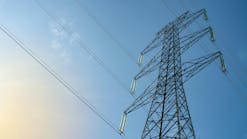EDF, Enedis and the Nanyang Technological University, Singapore (NTU Singapore) have launched the microgrid project, MASERA (Microgrid for Affordable and Sustainable Electricity in Remote Areas). It is one key part of the Singapore International Energy Week (SIEW) and the 2018 France Singapore Year of Innovation. This demonstration project will allow EDF to deploy a commercial offer of affordable and high-performance microgrids for isolated territories in Southeast Asia.
Microgrid solutions leveraging the potential of renewable energies offer development perspectives in isolated areas, taking into account the geographies, the current lack of infrastructures, economic growth of the major countries, and the need of independent and reliable power supply.
EDF’s MASERA is part of NTU’s offshore microgrid testbed known as REIDS (Renewable Energy Integration Demonstrator, Singapore). Located at Semakau landfill, NTU’s REIDS is the region’s first offshore microgrid testbed which integrates multiple renewable energy sources to develop solutions to tackle regional electricity issues.
MASERA demonstrator aims at addressing three key attributes:
- Affordable: electric supply for isolated territories located in South-East Asia, Africa or areas with geographical constraints.
- Sustainable: green energy helping to reduce the carbon footprint and promoting electric mobility.
- Reliable and resilient: Proven and standardized solutions for a reliable and resilient microgrid.
On this demonstration platform, EDF, leading a consortium of French smart grids/smart cities companies, has designed, built and commissioned the MASERA demonstrator within one year, a record time for such a prototype. Masera integrates various innovative solutions: bifacial photovoltaic panels, lithium-Ion storage system, affordable and eco-friendly zinc-air battery from zinium (EDF spin-off), Nissan Leaf electric vehicle, V2G (vehicle to grid) bidirectional charging hardware from Nuvve Corporation and load bank to reproduce typical customers’ consumption.
In addition, a 100% EDF distributed energy resources management system (DERMS) allows local and remote microgrid control and supervision, with standardized and secured communications as well as generation optimization. With the expertise of Enedis, the reliable and secure smart metering infrastructure enables precise consumption measurements and load management.
Beyond technical aspects and assets, this microgrid is an opportunity to implement a number of approaches:
- Design to cost approach, focused on customer needs and expectations;
- Plug and play and containerized solutions;
- Combining innovative and rugged solutions in order to control the overall cost and ensure the reliability and resilience;
- Enhancing the controls to optimize the distributed energy resources, through scheduling, forecasting and data from smart metering;
- Promoting new loads as services: electric vehicles, desalination, etc.
- Lean approach, leveraging previous EDF microgrid developments;
- Improved methods for future developments.
The MASERA project is the demonstration of an industrial, innovative and easily deployable solution. It will allow EDF to support economic development in remote and low electrified areas located in various parts of South-East Asia and Africa and therefore, improve the quality of life of communities.
This project illustrates EDF’s determination to design, develop and operate smart grid and microgrid projects on islands and territories — especially where there is no access to the grid, or where the local community is facing reliability issues. In recent years, EDF has developed and operated multiple innovative microgrid solutions in several geographies.
The MASERA microgrid will be connected to the REIDS medium voltage grid by early 2019 and from there on, it will become a flexible testbed for various use cases (100% renewables, islanding, critical loads, voltage regulation), technologies (via innovative storage, advanced controls) and features (via remote control).
In Singapore, EDF’s R&D Lab brings resources to develop the microgrid area in Southeast Asia and elsewhere.



